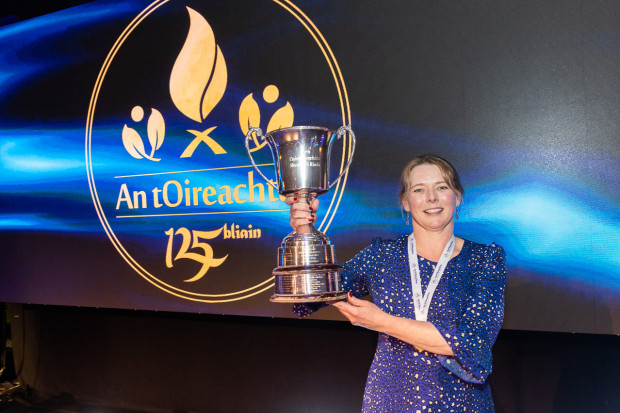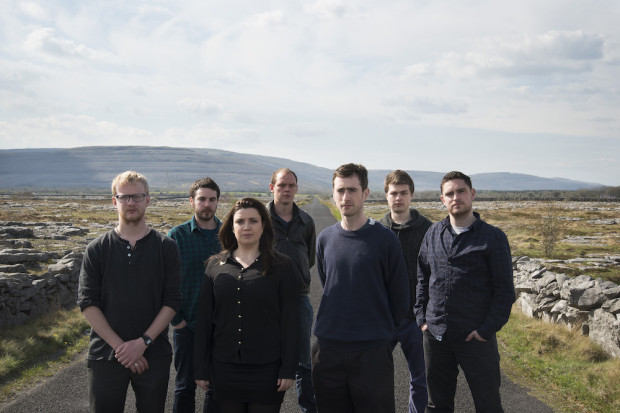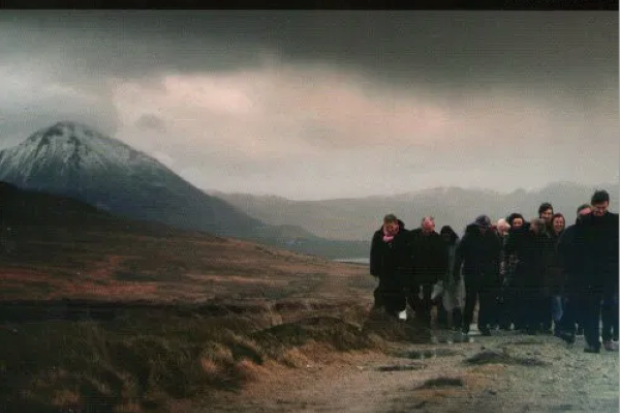Cead Cainte
Ghéilleas, tráth, do na smaointe duarca sin. Ghéilleas do thraidisiún na Gaeilge. D’umhlaíos agus dheineas comharthaí ómóis. … Ní ionam a bhí faic ach sa traidisiún. Is ann a bhí an uile ní. Bhíos múchta aige. Ansin, go hobann, chaitheas uaim é in ainm an diabhail agus fuaireas, láithreach, rud nach raibh súil agam leis. Fuaireas cead cainte. Is gearr go dtáinig fonn orm éalú ón gcead cainte agus éalú uaim féin agus filleadh ar an traidisiún. Is mar sin a bhíonn an duine; anonn is anall ag leanúint a phearsantacht féin, scaitheamh, agus scaitheamh eile ag leanúint an traidisiúin. Pé ceann a leanann sé bíonn an ceann eile á thionlacan chomh maith. Sé tionlacan na n-óinseach é.
Seán Ó Ríordáin
In a recording made for Gael-Linn in 1969 Seán Ó Ríordáin, the most significant twentieth-century poet in Irish, speaks of his fraught relationship with tradition. ‘There was nothing in me’, he says, ‘everything was in the tradition. I was smothered by it’. Frustrated by the inherited conventions, he tells us he eventually tired of the struggle and abandoned tradition completely. Immediately, and unexpectedly, ‘I found I had permission to speak’. The disabling tension between established conventions of language and form and the iconoclastic elements of his own fractured imagination is a defining element of Ó Ríordáin’s poetic signature. His work indicates both the possibilities and the limitations of a poetry that attempts to distinguish itself from the overpowering presence of a temporarily rejected, but never silenced, tradition, which haunts his poems. The effort eventually proved too much, and Ó Ríordáin’s poetic voice had fallen silent several years before his death in 1977.
Following Ó Ríordáin, the troubled relationship with tradition became a defining feature of poetry in Irish throughout much of the 1970s and 80s. More recently, there is increasing evidence of a more benign relationship with tradition in the work of Nuala Ní Dhomhnaill and Biddy Jenkinson, both of whom approach the Irish folk and literary traditions as enabling rather than disabling presences. It is hardly coincidental that both poets have collaborated with singer Pádraigín Ní Uallacháin, whose acoustic imagination is so steeped in the Gaelic Irish tradition that she can inhabit it comfortably without any sense of compromising her own contemporary voice.
Ní Uallacháin’s work to date is characterised by deference to a tradition that is neither inhibiting nor overpowering, but entirely vulnerable, barely audible to the contemporary imagination, and in danger of receding into silence. Her commitment is evident in the approach adopted in her book A Hidden Ulster: People, Songs and Traditions of Oriel (2003), a work of meticulous scholarship which attempts to re-introduce songs retrieved from the fragmented archive of folk memory to the living tradition. Her reconstruction of songs from south-east Ulster is a forensic form of cultural archaeology that attempts to heal the rupture of history and re-establish a meaningful dialogue between past and present.
Her latest recording for Gael Linn, Áilleacht (CEFCD 187), is a collection of new compositions including two tunes and nine songs in Irish, produced and arranged by Steve Cooney and Danish composer Palle Mikkelborg. The other musicians featured are Iarla Ó Lionáird, Laoise Kelly, Odhrán Ó Casaide, Helen Davies, Mikkel Nordsø, and Brian Dunning, all of whom make their own singular contributions to a wonderfully textured recording. The songs are remarkable for the extent to which they rely, both lyrically and musically, on more or less conventional material from the Irish tradition and yet avoid, for the most part, the dangers of pastiche. In a sense, the album is a natural progression from A Hidden Ulster and a vindication of Ní Uallacháin’s belief in the enabling power of tradition, the enduring ability of musical and poetic formulae from the folk tradition to make sense. In that, she is at one with some of the most significant voices in modern Irish poetry, from Máire Mhac an tSaoi and Máirtín Ó Direáin through to Nuala Ní Dhomhnaill, Colm Breathnach, and Biddy Jenkinson, whose poem ‘Mis’ provides the lyrics for ‘Cruit Dhubhrois’, one of the most engaging tracks on Áilleacht. The same dynamic engagement with tradition is a feature of the poems of Somhairle Mac Gill Eain, whose influence can be felt as a submerged presence in the words of some of the songs.
Ní Uallacháin’s singing, and, indeed, Steve Cooney’s brilliantly sympathetic arrangements, speak directly to the more aristocratic element of our cultural inheritance, a reminder, if such were necessary, that a distinctive feature of the Irish folk tradition, both in music and poetry, is the overlap between the oral and the literary, the aristocratic and the democratic. ‘Cara Caoin’ and ‘Céad Slán, a Ghrá’ bear witness to the intimacy and intensity of friendship that survives death:
Go leigheasfear an phian seo le deora ón chroí
Is go múchfar an brón le dóchas;
Go n-ólfa tú feasta as tobar na ngrást
Agus tobar na ndeor – fág ’do dhiadhsa.
‘Cruit Dhubhrois’ provides a perfect setting for Biddy Jenkison’s poem, which emphasises the erotic mischief and the transformative potential of music. The words are constantly on the verge of becoming mouthmusic, dissolving into pure melody, as the harp responds to each move of the singer’s voice, tracking it and eventually containing it, subduing it without ever repressing it, as, indeed, the music of Dubhrois’s crann clis overcame the resistance of Mis.
In ‘Spiorad Saor’, the funereal march-rhythm provides a perfect counter to the lightness of the flute which threatens to free itself at several points as the singer asks that her body be raised from the marble altar, the professional deities banished, that she be left on a mountainside while her death is lamented in a lullaby. The flute-music finally frees itself and flutters beyond the reach of the final chords of the song.
The highlight of the album, however, is the final track, ‘Gleann na nDeor’. The stripped-back lyric is reminiscent of some of the best songpoems in the sean-nós repertoire, where the simplest words are sustained by an unusual level of emotional conviction:
Tá an croí á réabadh sa ghleann, sa ghleann,
Tá an croí á réabadh i ngleann na ndeor;
Ceo is gaoth sa ghleann, sa ghleann,
Ceo is gaoth i ngleann na ndeor.Tá dhá láimh mo leannáin, leannáin,
Tá dhá láimh mo leannáin fuar …
This is a deceptively sophisticated composition in which a profound emotional disturbance is articulated apparently without artifice, impressing itself on the listener as though it were actual and direct speech. It is a fitting conclusion to a substantial and deeply satisfying piece of work.
Louis de Paor’s new collection of poetry, Ag Greadadh Bas sa Reilig/Clapping in the Cemetery, is published by Cló Iar-Chonnachta.
Published on 1 January 2006

















